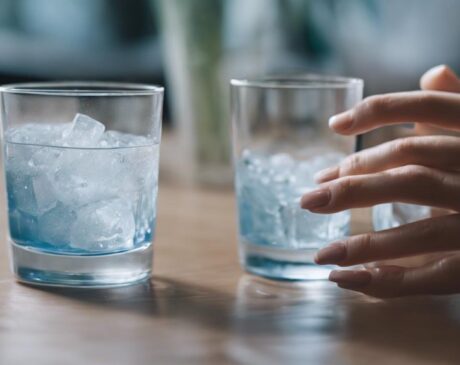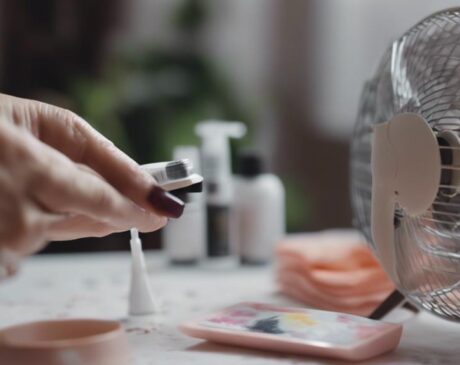Will Liquid Nails Hold Plastic or Metal?
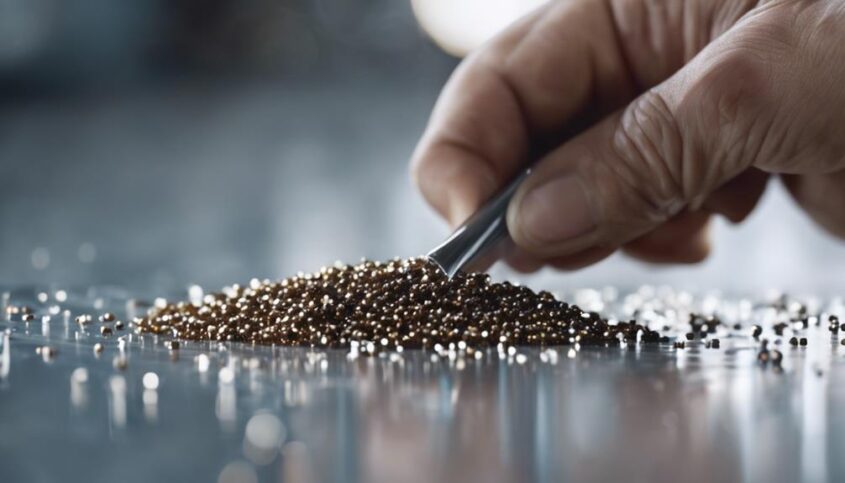
Liquid Nails is a reliable adhesive for both plastic and metal, providing strong and durable bonds. It adheres well to plastic surfaces, making it ideal for various plastic components. Additionally, it demonstrates impressive adhesion strength on metal, ensuring long-lasting bonds for metal projects. Proper surface preparation and application techniques are crucial for optimal bonding results. For more detailed information on factors affecting bonding, application tips, and comparisons with other adhesives, explore further.
Key Takeaways
- Liquid Nails holds plastic by offering strong adhesion for trims and panels.
- It securely bonds metal surfaces, ensuring durability in construction and automotive projects.
- Proper surface preparation enhances adhesion strength for both plastics and metals.
- Adhesive application in a zigzag pattern or dots ensures optimal coverage and bonding.
- Choosing the right adhesive, like Liquid Nails, is crucial for successful metal and plastic bonding.
Introduction to Liquid Nails
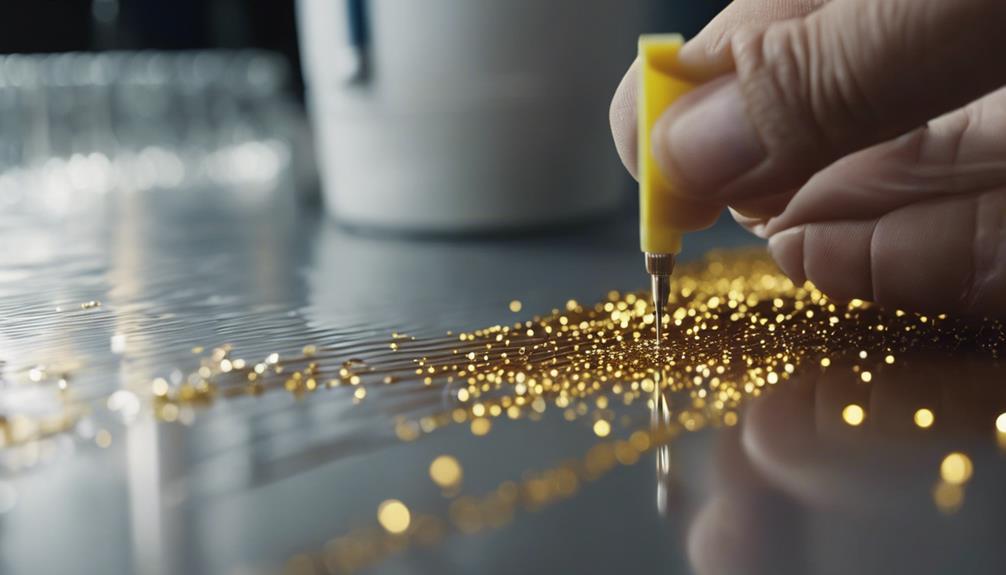
Liquid Nails is a versatile construction adhesive commonly used in various bonding applications due to its strong and durable properties. This adhesive is renowned for its ability to provide a reliable and long-lasting bond between a wide range of materials, making it a go-to choice for professionals and DIY enthusiasts alike. Liquid Nails excels in bonding materials such as wood, metal, concrete, and even certain plastics, offering a convenient solution for a variety of construction and repair projects.
One of the key advantages of Liquid Nails is its versatility, as it can be used both indoors and outdoors, making it a reliable option for a diverse array of applications. Its strong adhesive properties ensure a secure bond that can withstand various environmental conditions, providing durability and peace of mind to users. Whether you are working on a woodworking project, installing drywall, or repairing a broken household item, Liquid Nails offers a dependable bonding solution that promotes efficiency and innovation in your work.
Adhesion Strength on Plastic
When considering the application of construction adhesives on plastic surfaces, it is important to evaluate the adhesion strength provided by the product. Liquid Nails, a popular construction adhesive, offers strong adhesion to various materials, including plastics. The adhesion strength on plastic surfaces is crucial for ensuring the longevity and durability of the bonded components.
Liquid Nails' adhesion strength on plastic is notable for its ability to create a reliable bond that withstands various environmental conditions, vibrations, and stresses. This strength comes from the adhesive's advanced formula, which is designed to provide a secure and long-lasting bond on plastic surfaces.
Whether bonding plastic trims, panels, or other plastic components, Liquid Nails' adhesion strength ensures that the bond remains intact over time. This reliability makes it a versatile choice for construction projects that involve plastic materials.
Adhesion Strength on Metal

When considering the adhesion strength of Liquid Nails on metal surfaces, two crucial points come to light: the compatibility of the adhesive with various types of metal surfaces, and the durability of the adhesion over time. Understanding how Liquid Nails interacts with different metals and assessing its long-term bonding capabilities on metal surfaces are essential aspects to explore when evaluating its effectiveness for metal bonding applications. By focusing on these points, one can gain valuable insights into the adhesive's performance and suitability for metal-based projects.
Metal Surface Compatibility
Is the adhesion strength of Liquid Nails on metal surfaces reliable and durable for various applications? Liquid Nails demonstrates impressive adhesion strength on metal surfaces, making it a versatile choice for a wide range of projects. Whether bonding metal sheets, attaching metal fixtures, or securing metal components, Liquid Nails provides a robust and long-lasting bond. Its compatibility with metal surfaces opens up innovative possibilities for construction, manufacturing, and DIY enthusiasts. To showcase the effectiveness of Liquid Nails on metal, the table below highlights key features and benefits of its adhesion strength:
| Adhesion Strength | Durability | Versatility |
|---|---|---|
| High | Long-lasting | Wide range of applications |
Adhesion Durability on Metal
Liquid Nails demonstrates exceptional adhesion durability on metal surfaces, ensuring a reliable and long-lasting bond for a variety of applications. The advanced formula of Liquid Nails is specifically designed to create a strong and permanent bond with metal substrates, making it ideal for projects that require a secure and enduring hold. Whether used in construction, automotive repairs, or DIY projects, Liquid Nails proves to be a trusted adhesive that can withstand the rigors of various environments. Its ability to adhere to metal surfaces with resilience and strength makes it a go-to choice for professionals and enthusiasts alike. When seeking a dependable adhesive solution for metal bonding that offers unparalleled durability, Liquid Nails stands out as a top contender in the market.
Factors Affecting Bonding
Several key factors play a significant role in determining the strength and durability of bonds formed with adhesive products like Liquid Nails. The first crucial factor is surface preparation. Surfaces must be clean, dry, and free of any contaminants like dust, oil, or rust to ensure optimal adhesion. Proper surface roughening or priming may also be necessary for certain materials to enhance bonding. Secondly, the choice of adhesive is pivotal. Different formulations are designed for specific materials and applications, so selecting the appropriate type of Liquid Nails for the job is essential for a strong bond. Additionally, environmental conditions such as temperature and humidity can impact the curing time and overall bond strength. Ensuring the adhesive cures under the recommended conditions is vital for achieving the desired results. Lastly, applying the correct amount of adhesive evenly across the bonding surfaces and allowing sufficient time for curing are critical for maximizing the bond strength. By considering these factors, one can optimize the bonding performance of Liquid Nails on various materials.
Application Tips for Plastic
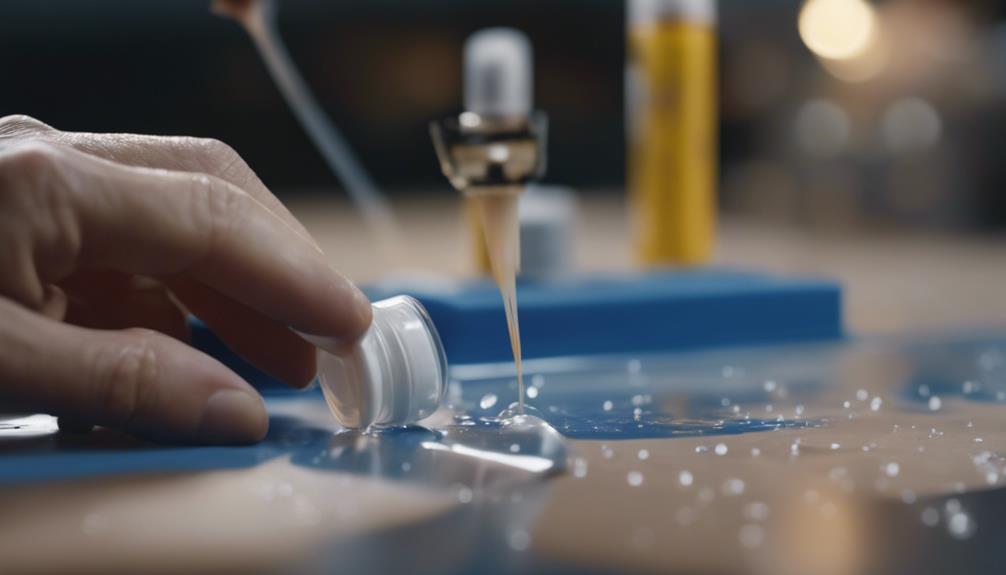
To ensure a strong bond when using Liquid Nails on plastic surfaces, proper preparation is key. Thoroughly clean the plastic surface to remove any dirt, oil, or debris that could hinder adhesion. Apply the adhesive evenly and allow sufficient time for it to cure according to the manufacturer's instructions.
Plastic Surface Preparation
Preparing the plastic surface before applying Liquid Nails is crucial for ensuring a strong and durable bond. To achieve optimal adhesion, start by cleaning the plastic surface thoroughly to remove any dust, dirt, or grease that could hinder the bond. Sanding the plastic with fine-grit sandpaper can help create a rough surface for the adhesive to grip onto. Additionally, using a plastic primer specifically designed for improving adhesion can further enhance the bond strength. Ensure the surface is completely dry before applying the Liquid Nails to prevent any issues with the bond. By properly preparing the plastic surface, you can maximize the effectiveness of the adhesive and create long-lasting bonds for your plastic projects.
Proper Adhesive Application
For optimal adhesion when applying Liquid Nails to plastic surfaces, thorough cleaning and proper surface preparation are essential steps to ensure a strong and durable bond. Before applying the adhesive, ensure that the plastic surface is free of dust, dirt, grease, and any other contaminants that could interfere with the bonding process. Use a mild detergent or rubbing alcohol to clean the surface thoroughly, and allow it to dry completely before proceeding. Additionally, roughening the surface slightly with sandpaper can improve the adhesive's grip. When applying the Liquid Nails, use a consistent and even bead along the bonding surface to promote uniform adhesion. Following these application tips will help maximize the bond strength and longevity when bonding plastic materials with Liquid Nails.
Application Tips for Metal
When working with metal, ensure the surface is clean and free of any grease or debris before applying Liquid Nails for optimal adhesion. This step is crucial as any contaminants on the metal surface can hinder the bonding process and compromise the strength of the adhesive. Additionally, roughening the metal surface slightly with sandpaper can improve the grip of the Liquid Nails.
Before applying the Liquid Nails, it is recommended to test a small amount on a sample piece of metal to ensure compatibility and adhesion strength. This test will also give you an idea of the drying time needed for the adhesive to set properly.
When applying the Liquid Nails to metal surfaces, consider using a caulk gun for precise and controlled dispensing. Apply the adhesive in a zigzag pattern or dots, depending on the size of the metal pieces being bonded. Press the metal pieces together firmly to ensure a strong bond and use clamps to hold them in place until the adhesive has fully cured for the best results.
Comparing With Other Adhesives
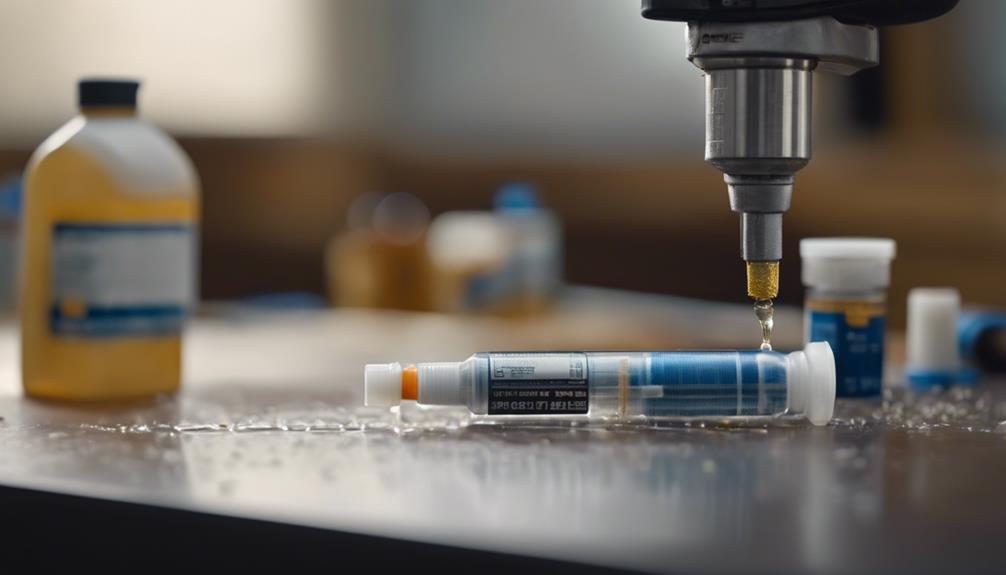
In assessing the effectiveness of Liquid Nails for bonding metal surfaces, it is essential to compare its performance with that of other adhesives commonly used in similar applications. When considering options for metal bonding, various adhesives come into play, each with its unique characteristics. To provide a clearer picture, let's compare Liquid Nails with two commonly used adhesives: epoxy and cyanoacrylate (super glue).
| Adhesive | Strength |
|---|---|
| Liquid Nails | High strength and durability |
| Epoxy | Excellent bonding strength |
| Cyanoacrylate | Fast setting, good for precision bonds |
Liquid Nails stands out for its high strength and durability, making it a reliable choice for metal bonding applications where resilience is key. On the other hand, epoxy adhesives offer excellent bonding strength, while cyanoacrylate adhesives are known for their fast setting time, making them suitable for precise bonding tasks. By understanding the strengths of each adhesive, you can make an informed decision based on the specific requirements of your project.
Conclusion and Recommendations
Upon evaluating the performance of Liquid Nails, epoxy, and cyanoacrylate adhesives for metal bonding applications, it is evident that each adhesive offers distinct advantages based on the specific requirements of the project. Liquid Nails, known for its versatility and ease of use, proves to be a reliable choice for bonding metal to various substrates. Epoxy adhesives, with their exceptional strength and durability, are ideal for applications where a high level of structural integrity is necessary. On the other hand, cyanoacrylate adhesives, commonly referred to as super glue, excel in providing quick adhesion and are perfect for bonding smaller metal components swiftly.
Frequently Asked Questions
Can Liquid Nails Be Used on Both Plastic and Metal Surfaces at the Same Time?
When selecting an adhesive for versatile applications, ensuring compatibility with various materials like plastic and metal is crucial. Liquid Nails, renowned for its strong bonding properties, offers a multi-surface adhesive solution suitable for both plastic and metal substrates simultaneously.
Is There a Specific Drying Time Required for Bonding Plastic With Liquid Nails?
When bonding plastic with Liquid Nails, adhering to the specific drying time is crucial for optimal results. Following manufacturer guidelines ensures a strong bond and durable connection between the materials, enhancing the overall performance and longevity of the project.
Can Liquid Nails Be Used on Outdoor Plastic or Metal Surfaces?
Liquid Nails, a versatile adhesive renowned for its bonding strength, can be effectively used on outdoor plastic or metal surfaces. Its advanced formula ensures durable adhesion, making it a reliable choice for various construction and repair projects.
Are There Any Safety Precautions to Be Aware of When Using Liquid Nails on Plastic or Metal?
When using Liquid Nails on plastic or metal surfaces, it is important to follow safety precautions. Ensure proper ventilation, wear protective gear like gloves and goggles, and avoid skin contact. Adhere to all manufacturer guidelines for best results and safety.
Does Liquid Nails Work Better on Certain Types of Plastic or Metal Materials Compared to Others?
Precision in product selection is paramount; Liquid Nails excels when matched meticulously with materials. Certain plastics and metals may bond more effectively due to their composition. Understanding these intricacies enhances project outcomes and durability.

